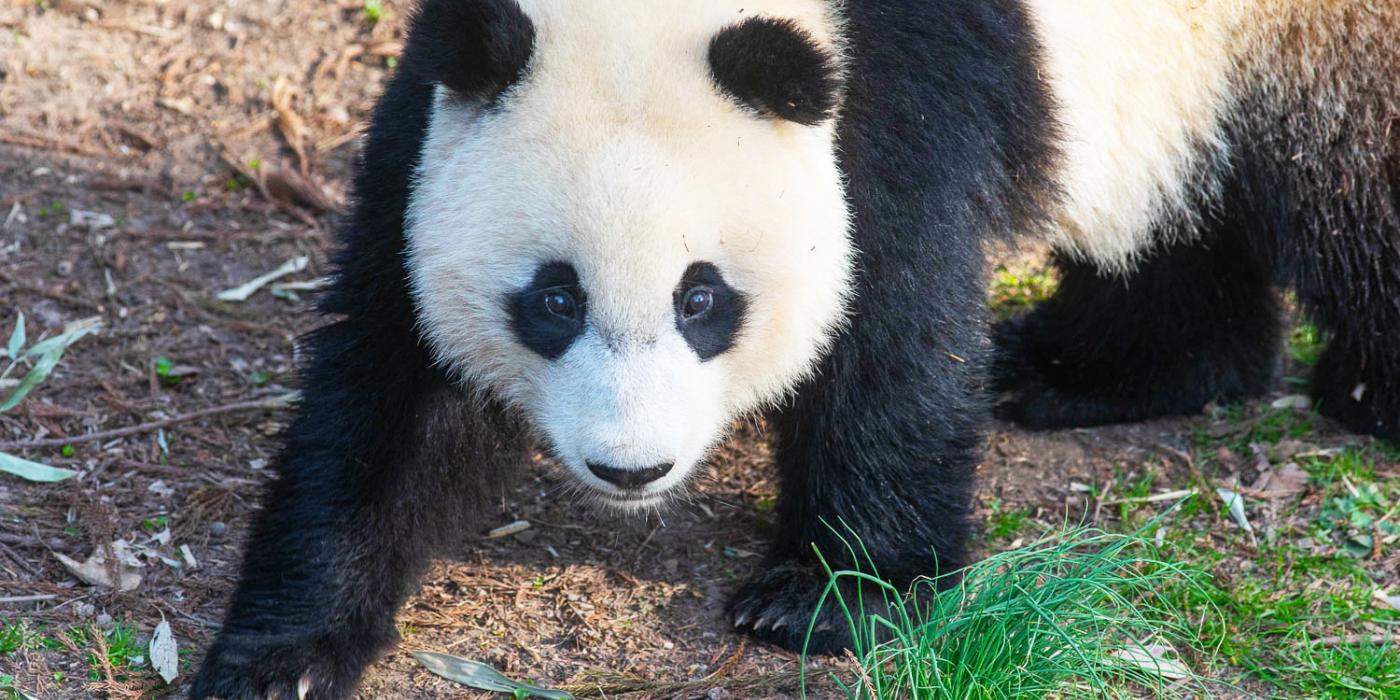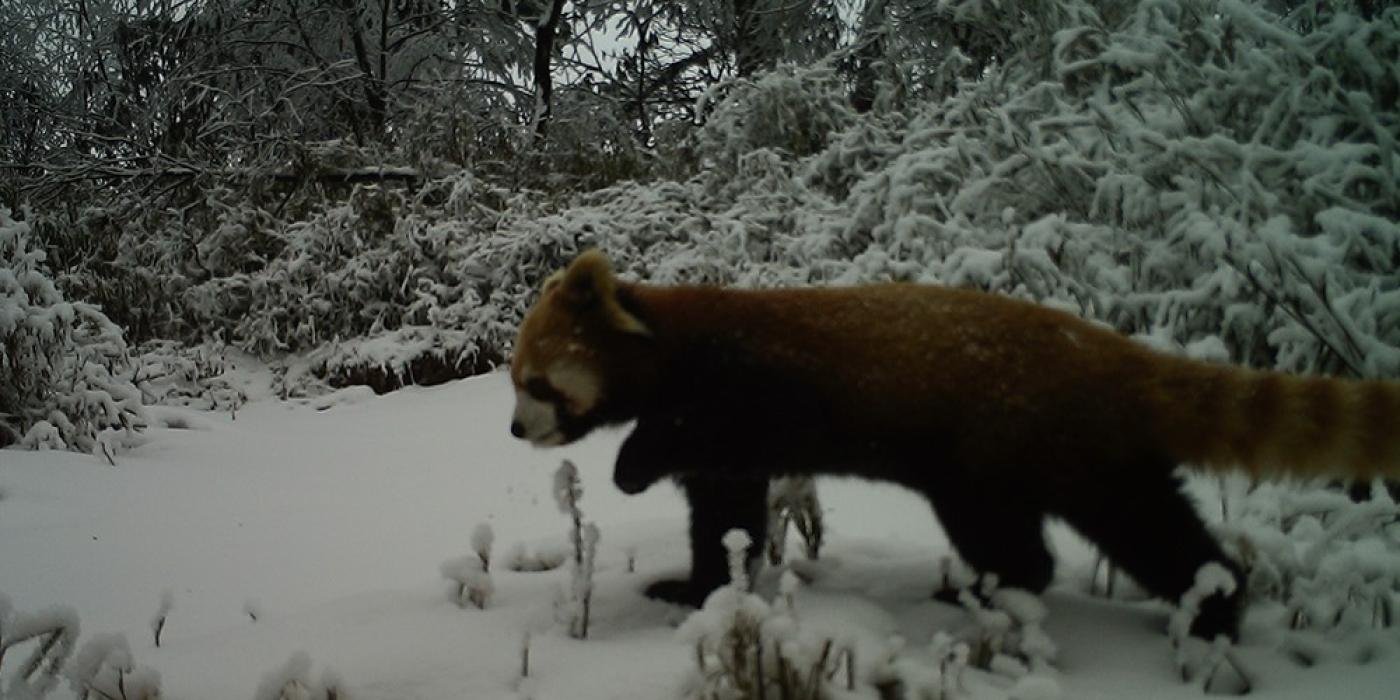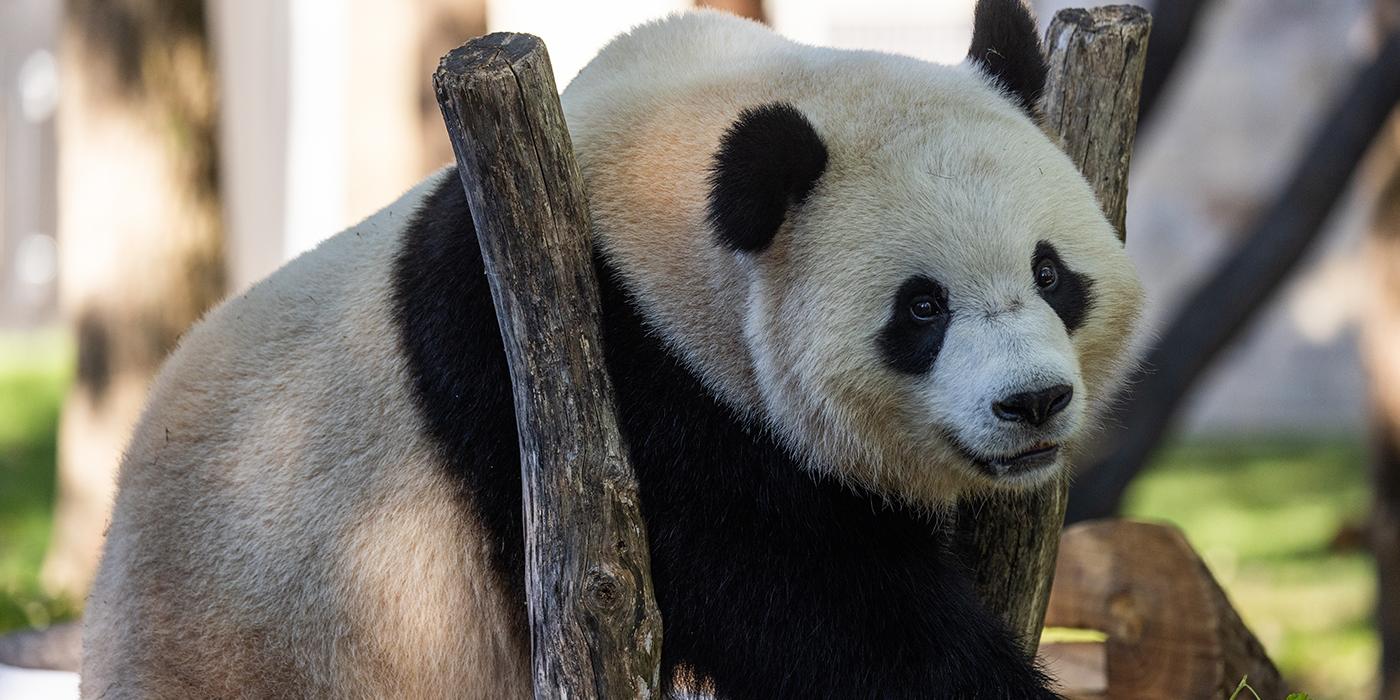#PandaStory: Growing Up
On April 16, the giant panda team will celebrate an enormous milestone—the 50th anniversary of our giant panda program! For giant panda cub Xiao Qi Ji, another important milestone is approaching: weaning. In the wild, panda cubs typically wean between ages 18 and 24 months. At that age, they are regularly consuming bamboo and solid foods. Some may nurse occasionally, but they do so more for comfort and less for fulfilling a nutritional need.
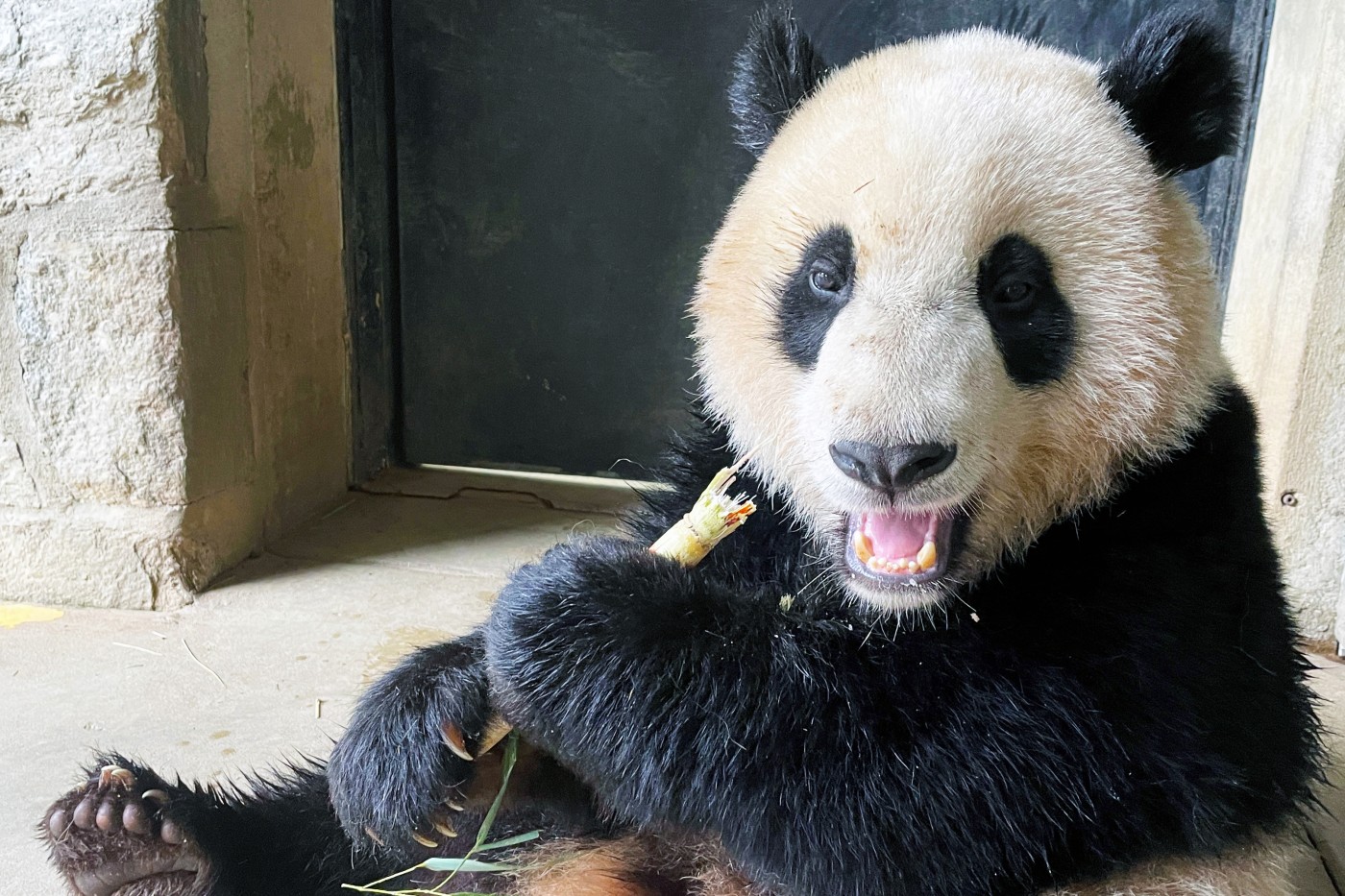
Xiao Qi Ji turned 19 months old Mar. 21, and regularly consumes bamboo, apples, carrots, nutrient-rich fiber biscuits and sweet potato—his favorite treat since he was 5 months old. He also nurses daily from his mother, Mei Xiang. At times, she may discourage him from nursing by vocalizing, pushing him away or moving away from him.
Our giant panda team watches the bears’ behavior closely and regularly tracks their activity. On any given day, we make adjustments to the amount of food they receive, the kinds of toys and enriching activities offered (such as husbandry training) and how much time they spend together.
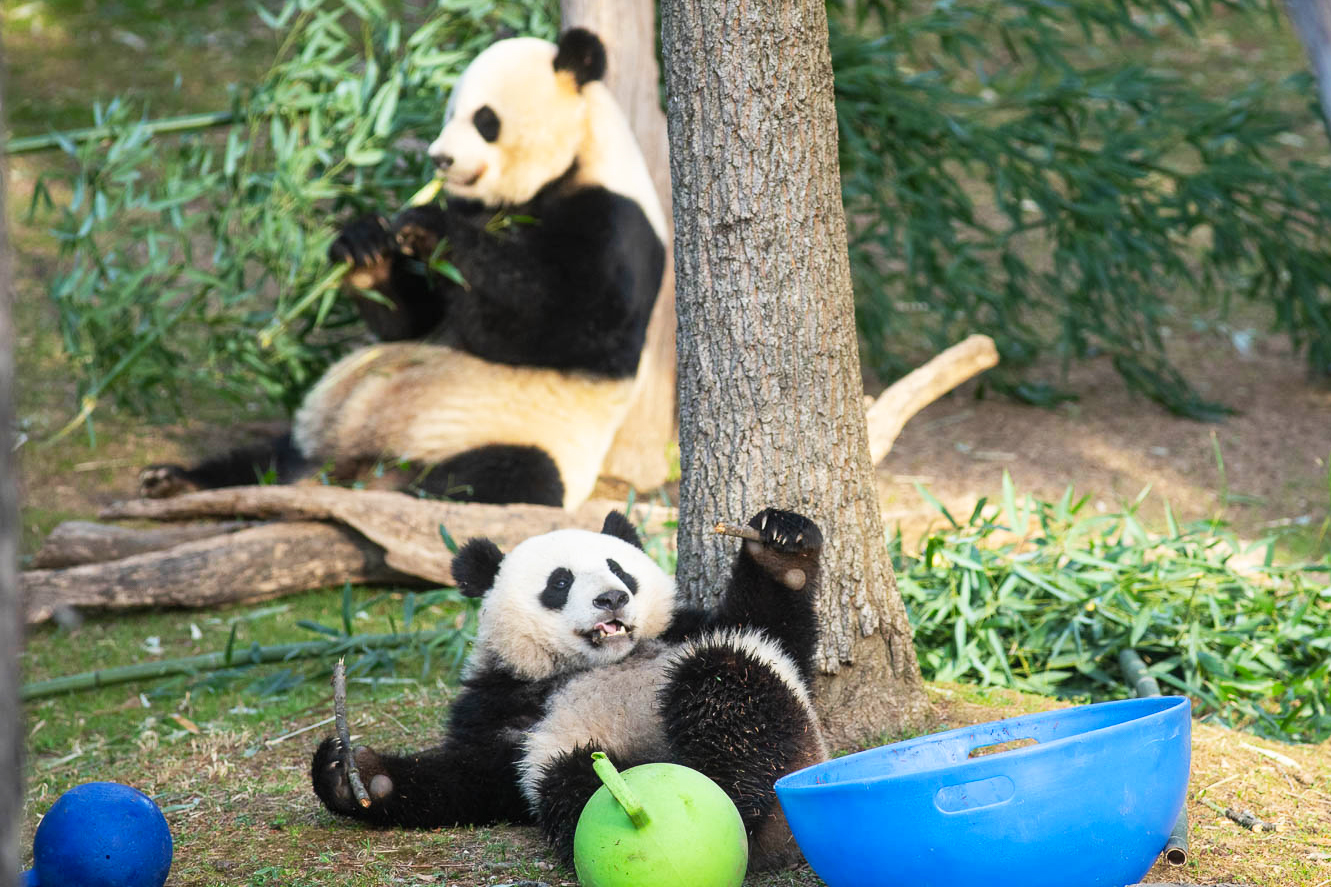
Panda playtime! Xiao Qi Ji (foreground) plays with enrichment balls and a saucer while his mother, Mei Xiang, enjoys breakfast nearby.
Like any giant panda cub at his age, Xiao Qi Ji’s personality is a mix of sweet and sassy. In one moment, he will be quietly playing beside Mei Xiang while she eats breakfast. The next, he will boldly grab ahold of her stalk of bamboo, or try to sneak a biscuit from one of her puzzle feeders.
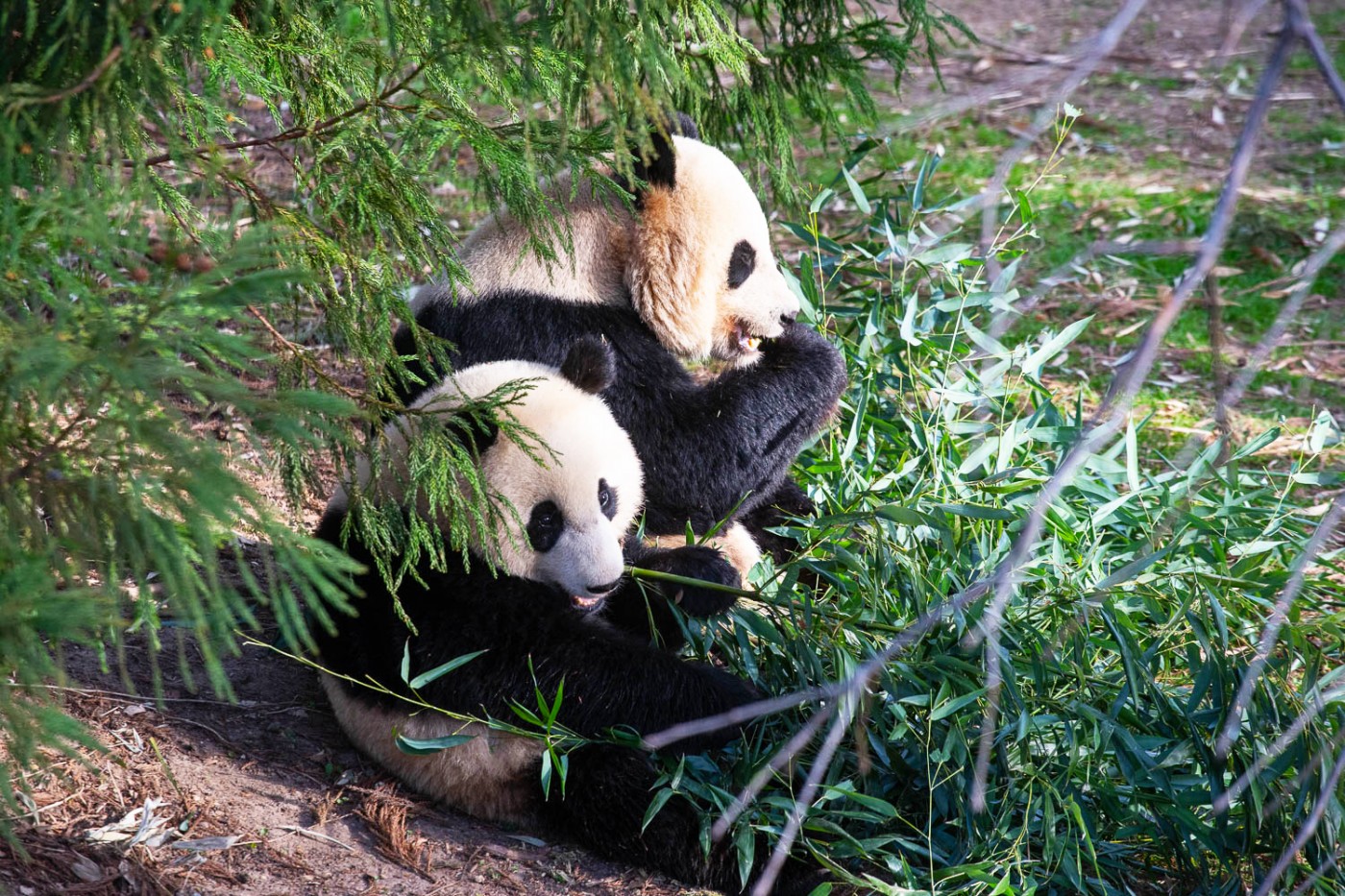
Time to eat! Giant panda Xiao Qi Ji (foreground) and his mother Mei Xiang sit side-by-side as they eat bamboo.
Testing boundaries is a common behavior in growing panda cubs. Luckily, Mei Xiang is a very experienced mother, having cared for Tai Shan (b. 2005), Bao Bao (b. 2013) and Bei Bei (b. 2015) prior to Xiao Qi Ji. She knows exactly when to be patient with a cub, and when to discipline them. Mei Xiang is quick to correct Xiao Qi Ji when he pesters her. A few minutes later, they calmly eat together, side by side.
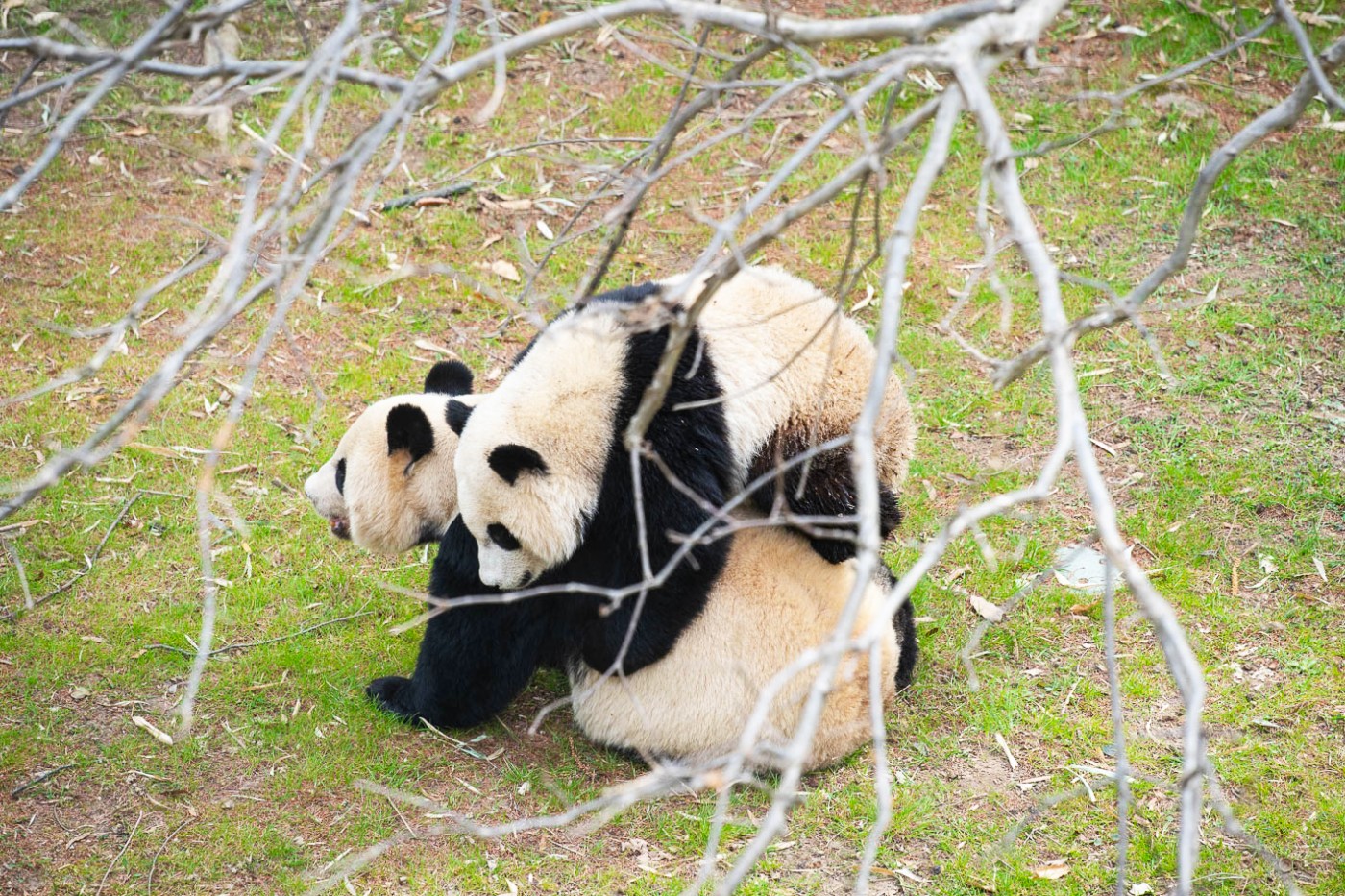
When Xiao Qi Ji throws his 121-pound frame on top of Mei Xiang to start a wrestling match, sometimes she indulges him and joins in the fun. At other times, though, she’s not in the mood and will walk away. Occasionally, when he tries to interrupt her sleep, she will make a warning vocalization or push him away.
Currently, Mei Xiang and Xiao Qi Ji have ample opportunities to interact. In the wild, a weaning giant panda cub would gradually move further away from its mother, until it is unable to see or hear her. To encourage Xiao Qi Ji’s independence, we have given Mei Xiang and Xiao Qi Ji access to new outdoor and indoor habitats so that he can eat and explore enrichment items on his own for brief periods.
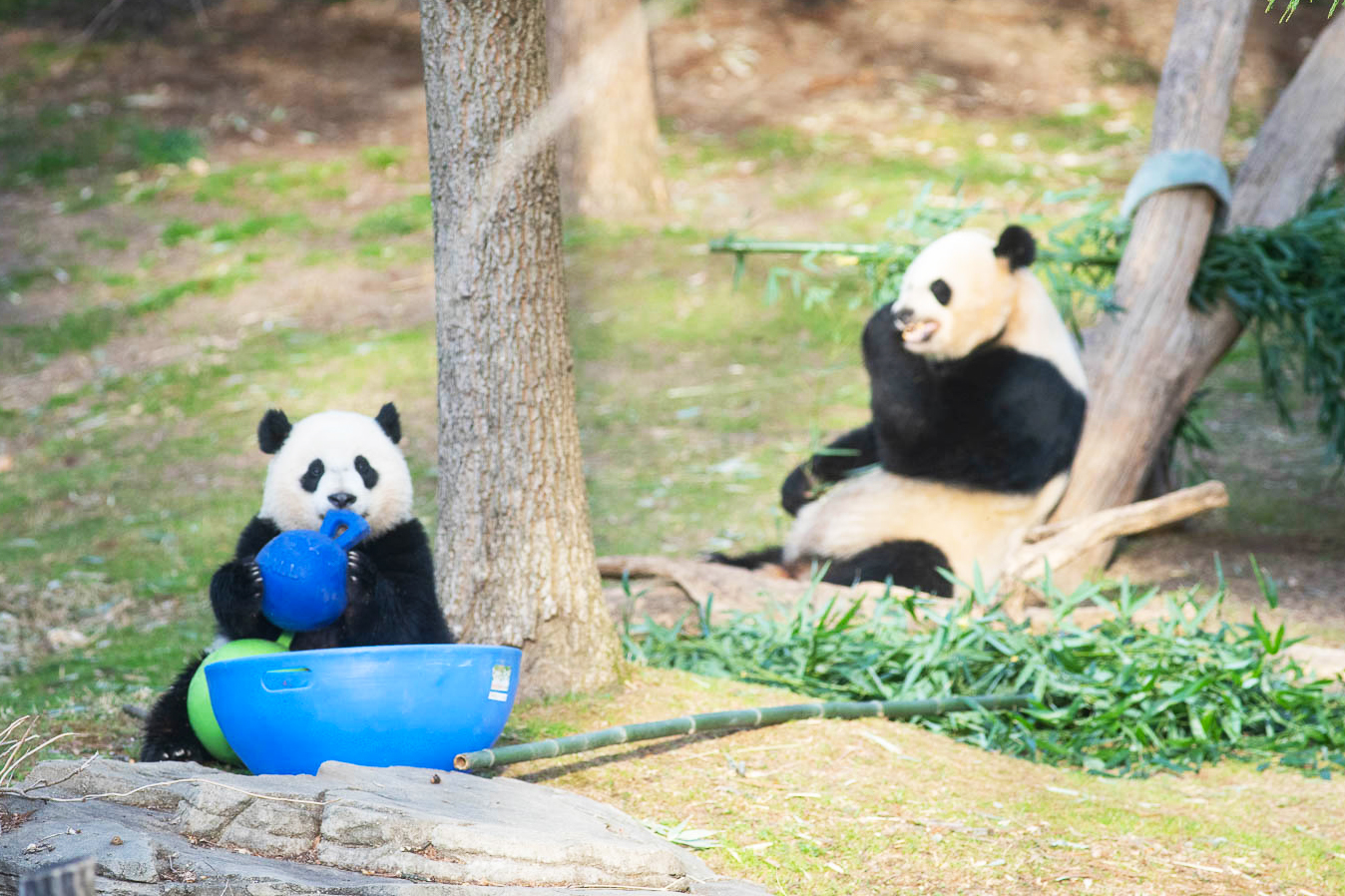
These changes will help Xiao Qi Ji acclimate to adulthood, since giant pandas are solitary in the wild. Determining when the time is “right” for separation is a delicate balance, as keeping a mother and cub together for longer than one or both are comfortable would eventually cause aggression between them.
As seasoned experts in giant panda behavior, we know exactly what behavioral cues to look for. Once a cub is comfortable and confident in a new yard, it is best to give them independence. Tai Shan remained with Mei Xiang until he was 19.5 months old; Bao Bao and Bei Bei separated from Mei Xiang when they were 18 months old.
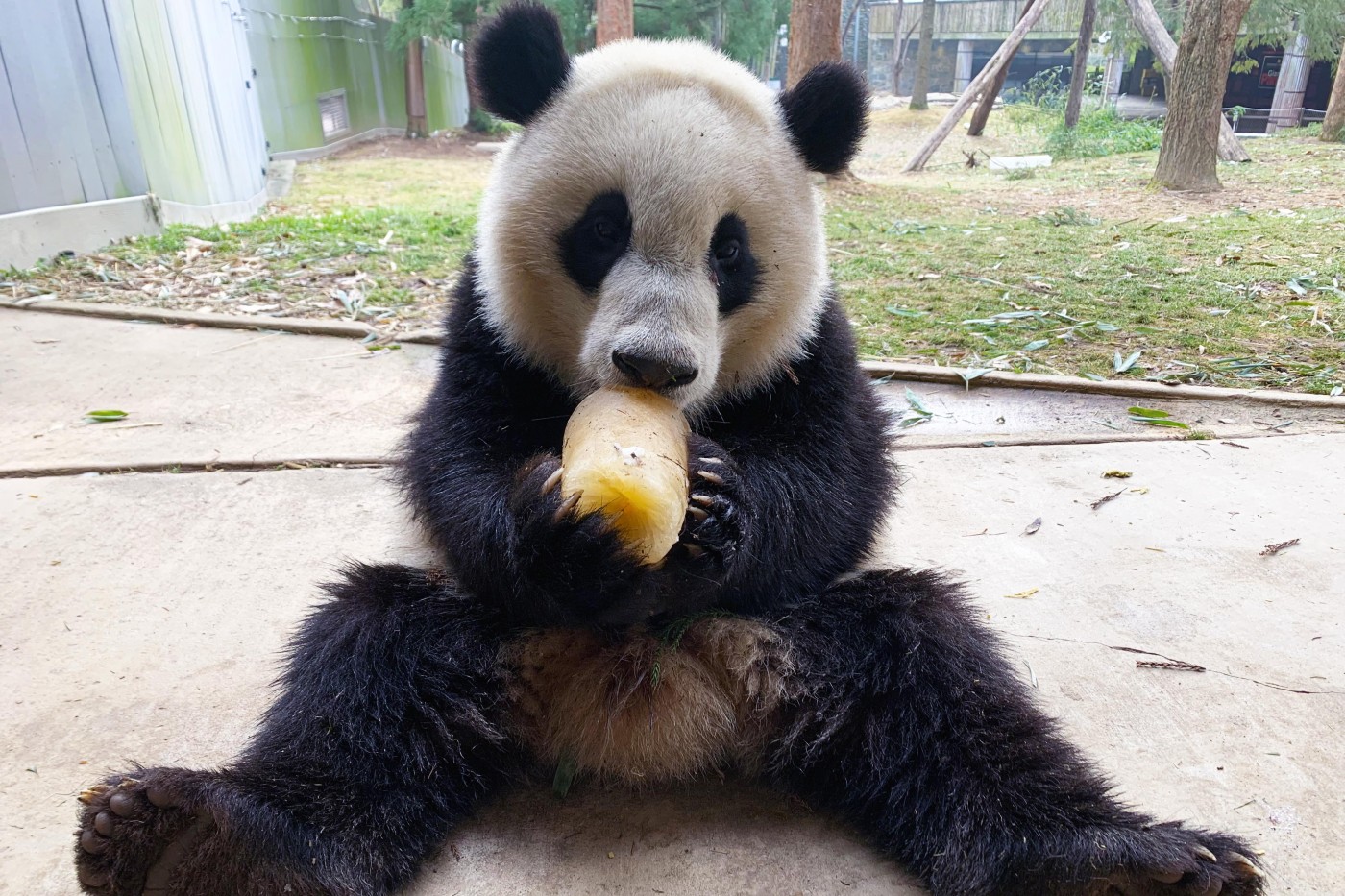
Normally, the arrival of spring ushers in giant panda breeding season. This year, however, will be different. At 23 years old, Mei Xiang is considered post-reproductive. With no breeding recommendation from our Chinese colleagues this year, we have a more relaxed timeline for Xiao Qi Ji’s separation.
Although Mei Xiang has exhibited some behavioral and hormonal changes, they are not at the same levels in the past when she entered a “full” estrus cycle. Xiao Qi Ji’s father, 24-year-old Tian Tian, is in rut, or readying himself for breeding. For male giant pandas, rut typically lasts from November to May or June. During this period, we often see Tian Tian patrol his yard, scent-mark, exhibit play behaviors and solicit attention from keepers while they clean and set up food and enrichment his indoor habitat.
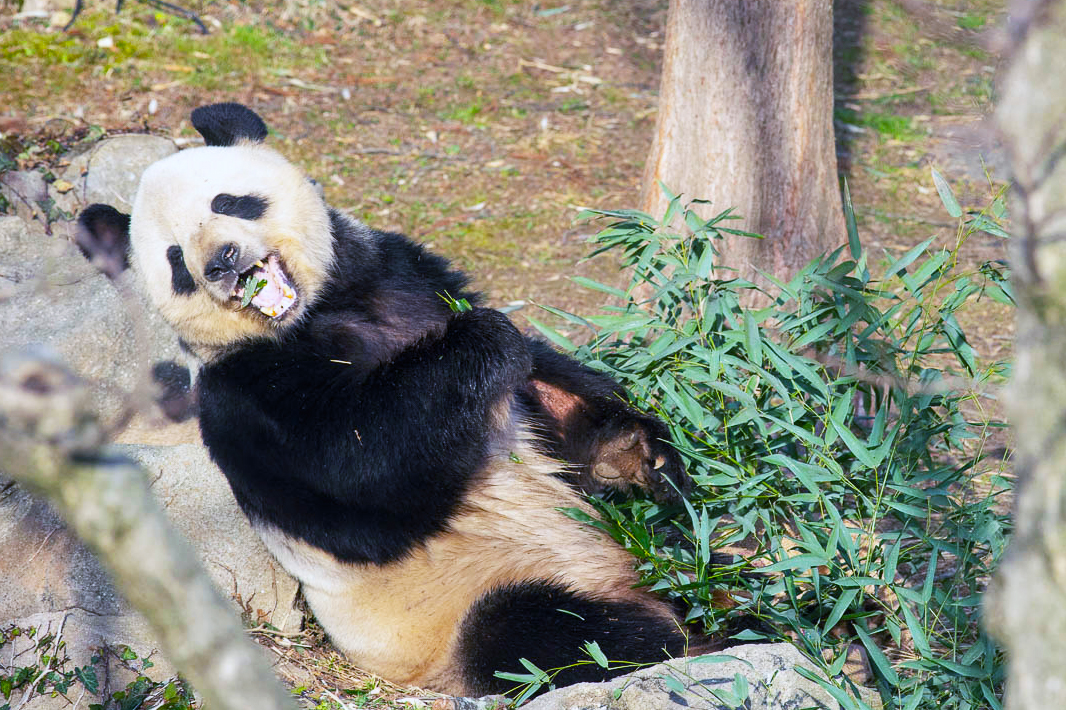
You may have noticed some shaved areas on Tian Tian’s front and rear legs. He had an annual checkup Feb. 24. As part of this routine health exam, Zoo veterinarians performed a complete physical exam. They conducted an echocardiogram and abdominal ultrasound; they also took radiographs of his teeth, shoulders, chest, abdomen, hips and knees.
We are happy to report that Tian Tian is in very good health! As is common in many aging animals, he has mild osteoarthritis in his shoulder, which Zoo veterinarians treat with a multimodal approach of pain medication and laser therapy. We share the information that we learn with our colleagues in China and around the world to help advance scientific knowledge of the species—and care of geriatric giant pandas in particular.
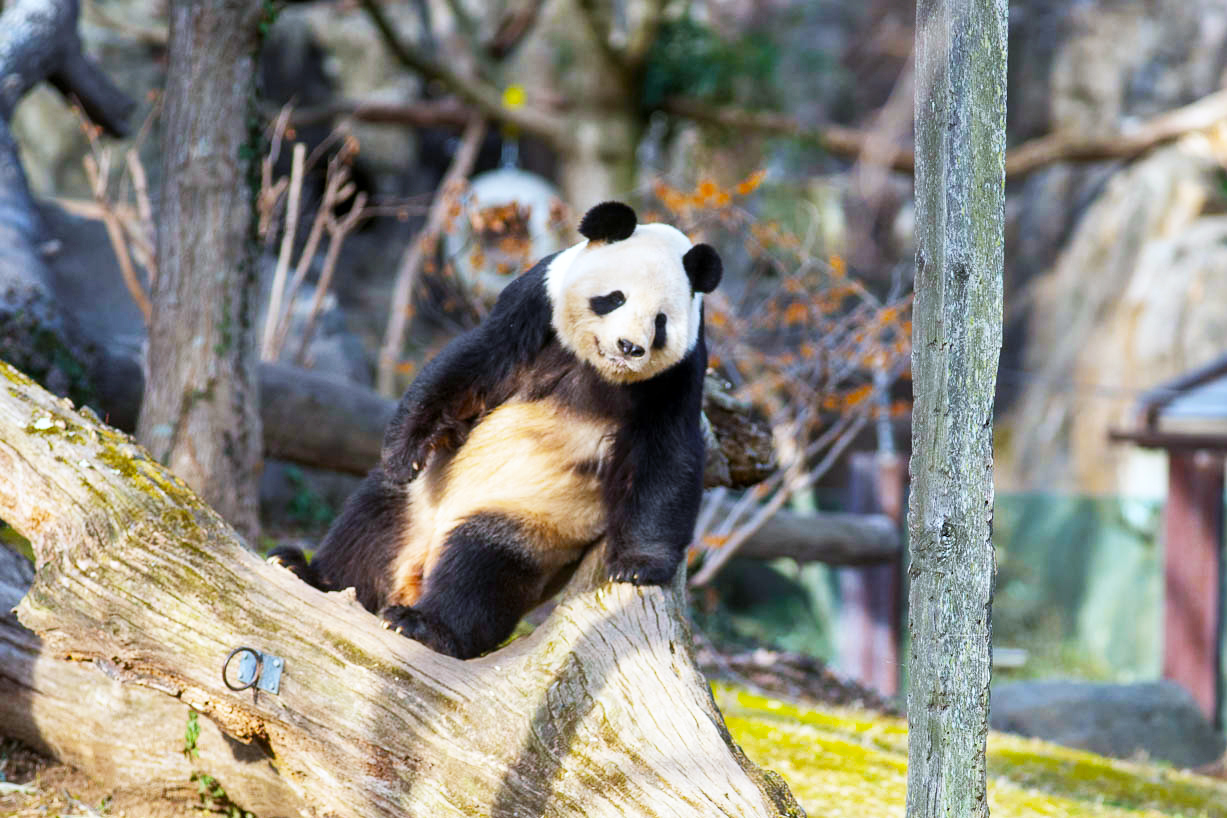
Our contributions to giant panda health, reproduction and cub care and just a handful of the achievements we have made in 50 years of caring for this charming and charismatic species. We hope that you will be able to join our “Pandaversary” festivities, sponsored by Boeing, over the coming weeks and months. On April 16 and 17, Tian Tian, Mei Xiang and Xiao Qi Ji will receive some extra-special treats as part of the celebration. To attend in person, be sure to reserve your entry and parking passes. Or, tune in to the party on the Giant Panda Cam, sponsored by Chase. I hope to see you there!
This story appears in the Mar. 31 issue of the Giant Panda Bulletin; read previous cub updates here. Want to see the pandas in person? Plan your visit!
Related Species:

